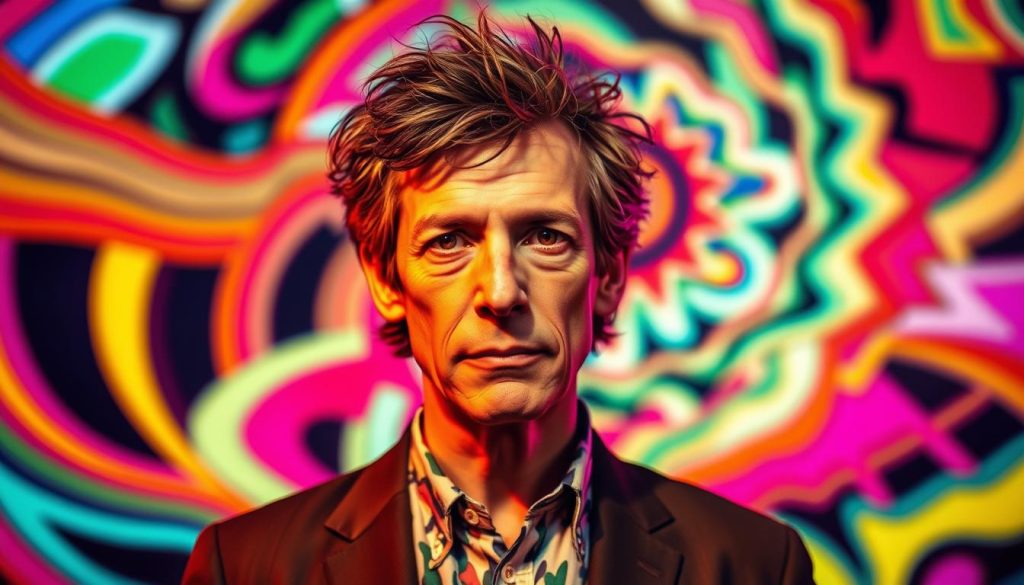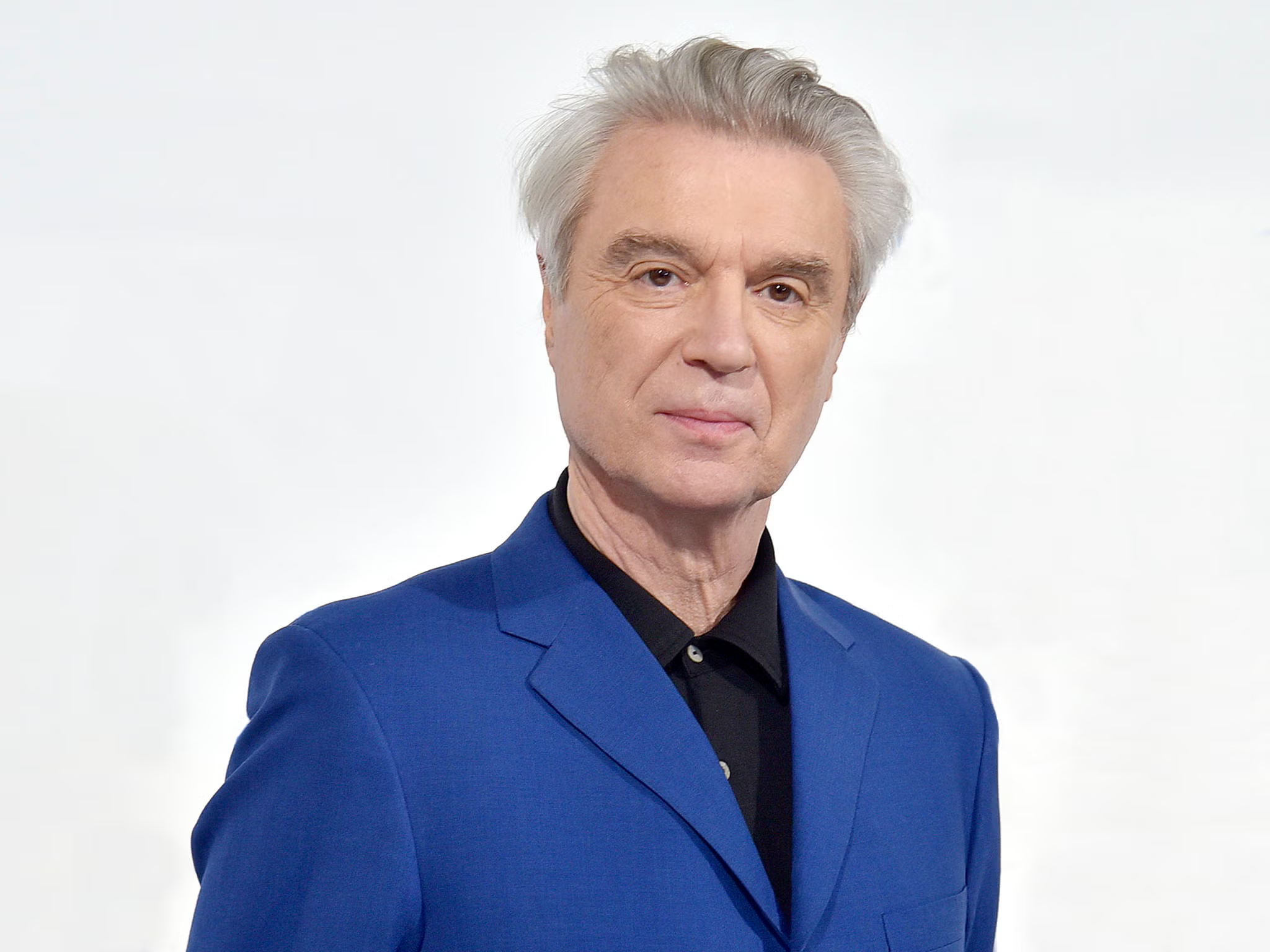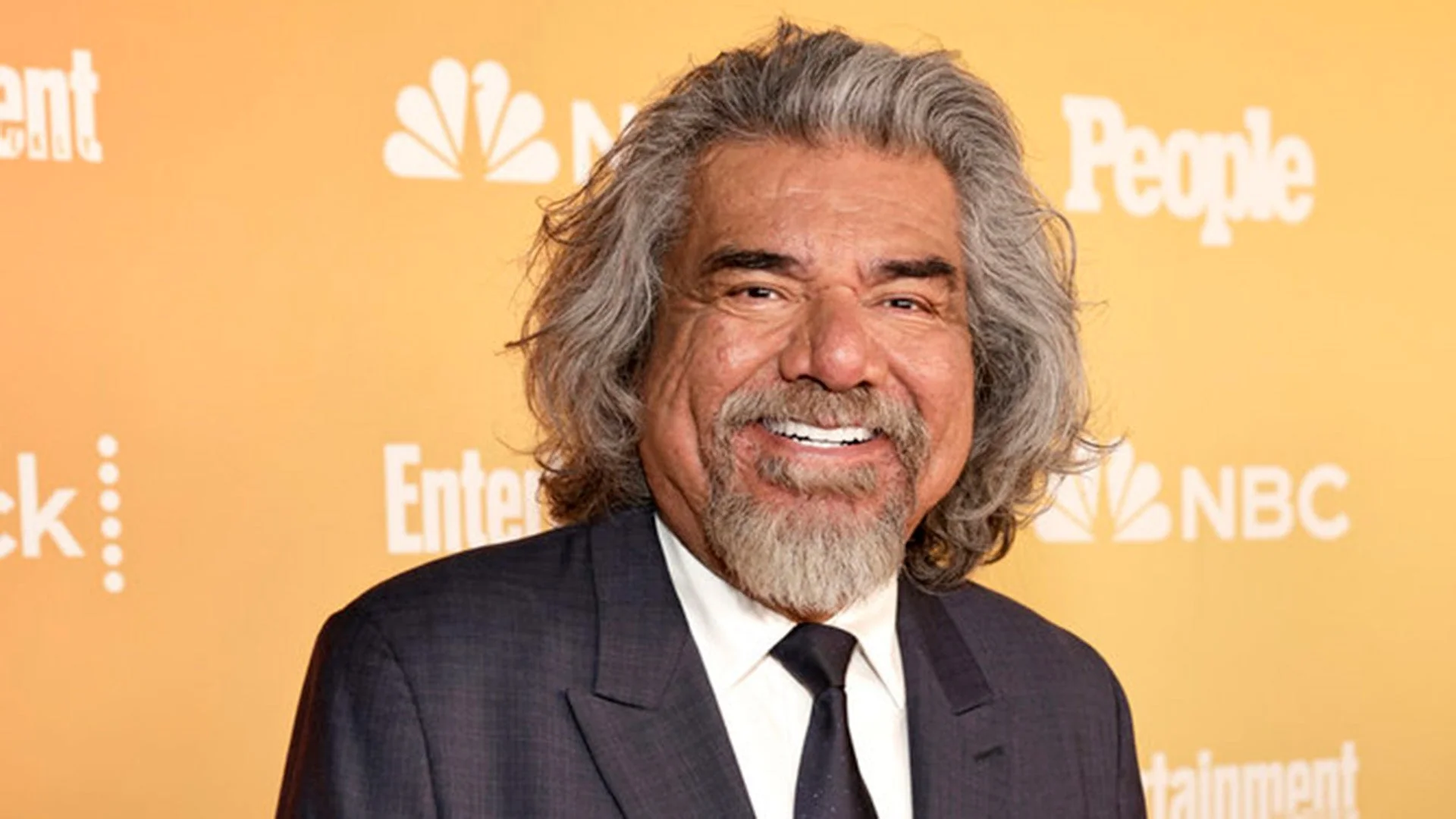David Byrne is a Scottish-American artist whose career spans over five decades. Known for his innovative approach to music and art, he has left an indelible mark on the industry. As a founding member of the iconic group Talking Heads, he helped shape the sound of new wave and art pop.
Beyond his work with Talking Heads, Byrne has pursued a diverse solo career. His projects include the groundbreaking concert film Stop Making Sense and the Tony Award-winning Broadway production American Utopia. These works showcase his ability to blend music, theater, and visual art seamlessly.
Living in New York, Byrne continues to push creative boundaries. His contributions to music, film, and visual art have earned him numerous accolades. From his early years in Scotland to his rise as a global artist, Byrne’s journey is a testament to his enduring talent and vision.
Key Takeaways
- David Byrne is a multifaceted artist with a career spanning over five decades.
- He co-founded the influential group Talking Heads, shaping new wave and art pop.
- His solo projects include the iconic concert film Stop Making Sense.
- Byrne’s Broadway production American Utopia won a Tony Award.
- He continues to innovate in music, film, and visual art from his base in New York.
Introduction to the Artistic Genius of David Byrne
From his early days in Scotland to his groundbreaking work in New York, David Byrne has redefined the boundaries of music and art. His career is a testament to the power of blending diverse creative disciplines into something entirely new.
At the Rhode Island School of Design, Byrne began experimenting with music and visual art. These formative years laid the foundation for his unique approach to creativity. His ability to merge different mediums has become a hallmark of his work.
Byrne’s contributions span music, film, theater, and multimedia production. His album *My Life in the Bush of Ghosts*, created with Brian Eno, is a landmark in experimental music. This project showcased his innovative use of sampling and soundscapes.
In film, Byrne’s work includes the iconic concert film *Stop Making Sense*. His Broadway production *American Utopia* earned critical acclaim and a Tony Award. These projects highlight his ability to create immersive experiences.
Byrne’s collaborations with artists like Brian Eno have shaped his sound and vision. Together, they explored new sonic territories, influencing generations of musicians. Their partnership remains a cornerstone of his artistic journey.
Below is a table summarizing key milestones in Byrne’s career:
| Year | Project | Significance |
|---|---|---|
| 1981 | *My Life in the Bush of Ghosts* | Pioneered sampling in music |
| 1984 | *Stop Making Sense* | Revolutionized concert films |
| 2019 | *American Utopia* | Tony Award-winning Broadway show |
David Byrne’s work continues to inspire and challenge audiences. His relentless pursuit of innovation ensures his place as a true artistic genius.
Early Life, Education, and Influences
Born in Scotland, David Byrne’s journey to becoming a musical icon began with humble roots and a passion for creativity. His early years in Dumbarton, Scotland, were marked by a love for music and art, which would later define his career.
Scottish Roots and American Upbringing
Byrne’s family moved to Canada and later to the United States during his childhood. These relocations exposed him to diverse cultures and musical styles. Growing up, he was drawn to instruments like the guitar, accordion, and violin, which became his first tools for creative expression.
Musical Beginnings and RISD Experience
Byrne’s formal education took a creative turn when he attended the Rhode Island School of Design (RISD). Here, he explored the intersection of music and visual art, laying the groundwork for his innovative approach. His time at RISD was pivotal, as it allowed him to experiment and develop his unique style.
These formative years were filled with influences that shaped his future. From traditional Scottish music to the experimental sounds of the 1970s, Byrne absorbed a wide range of inspirations. His early work hinted at the groundbreaking projects he would later undertake with the group Talking Heads.
| Year | Milestone | Impact |
|---|---|---|
| 1952 | Born in Dumbarton, Scotland | Roots of his musical journey |
| 1970s | Attended RISD | Developed his creative approach |
| 1975 | Co-founded Talking Heads | Began his rise as a musician |
Byrne’s early life and education were the foundation of his artistic genius. His ability to blend diverse influences into something entirely new continues to inspire musicians and artists worldwide.
Formation and Rise of Talking Heads
In the mid-1970s, a group of art school students in New York City came together to form a band that would redefine modern music. This group, later known as Talking Heads, began as a creative experiment but quickly became a cornerstone of the American music scene.
The Birth of an Iconic Band
Talking Heads was formed in 1975 by David Byrne, Chris Frantz, and Tina Weymouth. The trio met at the Rhode Island School of Design, where their shared passion for art and music sparked a collaboration. Early gigs in New York’s underground clubs helped them refine their sound, blending punk, funk, and art rock.
Their unique style caught the attention of audiences and critics alike. By 1977, they released their debut album, *Talking Heads: 77*, which featured hits like *Psycho Killer*. This record marked the beginning of their rise to fame.
Defining Albums and Groundbreaking Performances
Over the next decade, Talking Heads released a series of groundbreaking albums. *Remain in Light* (1980) showcased their experimental side, incorporating African rhythms and electronic elements. This album solidified their reputation as innovators in the music industry.
Their live performances were equally revolutionary. The concert film *Stop Making Sense* (1984) captured their energy and creativity, becoming a cultural landmark. Directed by Jonathan Demme, the film highlighted their ability to merge music, theater, and visual art into a seamless experience.
| Year | Album | Significance |
|---|---|---|
| 1977 | *Talking Heads: 77* | Debut album featuring *Psycho Killer* |
| 1980 | *Remain in Light* | Incorporated African rhythms and electronic sounds |
| 1984 | *Stop Making Sense* | Iconic concert film showcasing their live performances |
The success of Talking Heads not only defined a generation of music but also cemented Byrne’s reputation as a pioneering artist. Their ability to push boundaries and explore new sounds continues to inspire musicians today.
Innovative Solo Career and Genre-Spanning Albums
After achieving global fame with Talking Heads, Byrne embarked on a solo career that redefined his artistic identity. His solo albums became a platform for exploring diverse musical styles, blending traditional rhythms with modern experimentation.

Exploration of Afro-Cuban and Experimental Sounds
One of Byrne’s most notable solo albums, *Rei Momo*, delves into Afro-Cuban rhythms and Latin music. Released in 1989, this record showcased his ability to merge cultural influences into a cohesive and vibrant sound. Tracks like *Independence Day* and *Make Believe Mambo* highlight his passion for world music.
His 2018 album *American Utopia* further expanded his creative horizons. This project combined experimental soundscapes with themes of love and connection. The album’s success led to a Tony Award-winning Broadway production, cementing its place in his solo legacy.
Byrne’s solo work is marked by a fearless approach to genre-blending. From African beats to electronic textures, his albums push the boundaries of what music can be. This evolution reflects his commitment to innovation and his ability to adapt to new artistic challenges.
| Year | Album | Key Features |
|---|---|---|
| 1989 | *Rei Momo* | Afro-Cuban rhythms, Latin influences |
| 2018 | *American Utopia* | Experimental soundscapes, Broadway adaptation |
| 1992 | *Uh-Oh* | Funk and soul-inspired tracks |
Byrne’s solo career continues to inspire artists and audiences alike. His ability to merge traditional and modern elements ensures his place as a true innovator in the world of music.
Collaborative Ventures and Multimedia Projects
Collaboration has been a cornerstone of David Byrne’s innovative approach to music and art. By teaming up with other creative visionaries, he has pushed the boundaries of what art can achieve. His work spans music, film, and Broadway, blending disciplines into immersive experiences.
Partnerships with Brian Eno and Other Visionaries
One of Byrne’s most influential collaborations was with Brian Eno. Together, they created the groundbreaking album *My Life in the Bush of Ghosts*. This project pioneered the use of sampling and experimental soundscapes, influencing generations of musicians.
Byrne has also worked with other artists, including Jonathan Demme on the iconic concert film *Stop Making Sense*. These partnerships highlight his ability to merge music and film into unforgettable productions.
Intersections of Music, Film, and Broadway
Byrne’s work extends beyond traditional albums. His Broadway production *American Utopia* won a Tony Award, showcasing his talent for blending music and theater. This project brought his songs to life in a visually stunning performance.
In film, Byrne has directed and designed stage productions that challenge conventional norms. His ability to integrate traditional and modern production techniques has set new standards in multimedia art.
| Year | Project | Collaborators |
|---|---|---|
| 1981 | *My Life in the Bush of Ghosts* | Brian Eno |
| 1984 | *Stop Making Sense* | Jonathan Demme |
| 2019 | *American Utopia* | Various Broadway artists |
Byrne’s collaborative ventures continue to inspire artists and audiences alike. His ability to merge diverse talents into cohesive projects ensures his place as a true innovator in the world of art and music.
The Evolution of David Byrne’s Sound and Style
From raw new wave beginnings to polished worldbeat influences, Byrne’s music has continually evolved. His ability to blend genres and experiment with sound has made him a standout figure in the music industry. Over the decades, his style has shifted, reflecting a deep curiosity and willingness to explore new creative territories.

Transition from New Wave to Worldbeat
In the early days, Byrne’s work with Talking Heads defined the new wave genre. Tracks like *Psycho Killer* showcased raw energy and minimalist arrangements. As his career progressed, he began incorporating global influences, particularly African and Latin rhythms.
Albums like *Rei Momo* marked a significant shift. This record blended Afro-Cuban beats with Byrne’s signature style, creating a vibrant and unique sound. His exploration of worldbeat demonstrated his ability to adapt and innovate, bringing fresh perspectives to his music.
Innovative Instrumentation and Production Techniques
Byrne’s approach to instrumentation has always been experimental. He often uses unconventional instruments and techniques to create distinctive sounds. His collaboration with Brian Eno on *My Life in the Bush of Ghosts* pioneered the use of sampling, setting a new standard for production in the industry.
In recent years, he has embraced digital tools, blending traditional methods with modern technology. This fusion has allowed him to push the boundaries of what music can achieve, creating layered and immersive experiences for listeners.
Adapting to Modern Music Trends
Byrne’s ability to stay relevant is a testament to his adaptability. His 2018 album *American Utopia* reflects modern trends while staying true to his artistic roots. The project’s success led to a Tony Award-winning Broadway adaptation, showcasing his talent for merging music and theater.
Byrne continues to explore new directions, proving that innovation is at the heart of his creative process. His work remains a source of inspiration for artists and audiences alike, demonstrating the power of evolution in music.
Exploring the Impact of david byrne on American Music Landscape
The American music landscape has been profoundly shaped by the innovative contributions of David Byrne. His ability to blend genres, experiment with sound, and push creative boundaries has left an indelible mark on the industry. From his early days with Talking Heads to his groundbreaking solo projects, Byrne has redefined what music can achieve.
Byrne’s work with Talking Heads introduced a new wave of music that combined punk, funk, and art rock. Albums like *Remain in Light* showcased his ability to incorporate global influences, such as African rhythms, into his sound. This genre-blending approach has inspired countless artists and reshaped the American music scene.
One of his most significant solo projects, *American Utopia*, further cemented his legacy. This album and its Tony Award-winning Broadway adaptation highlighted his talent for merging music and theater. The project’s themes of connection and hope resonated deeply with audiences, proving the enduring relevance of his work.
Byrne’s collaborations have also been instrumental in his impact. His partnership with Brian Eno on *My Life in the Bush of Ghosts* pioneered the use of sampling and experimental soundscapes. More recently, his work with St. Vincent on the album *Love This Giant* showcased his ability to adapt to modern trends while staying true to his artistic vision.
Below is a table summarizing key projects that highlight Byrne’s influence:
| Year | Project | Impact |
|---|---|---|
| 1980 | *Remain in Light* | Introduced African rhythms to new wave |
| 2018 | *American Utopia* | Blended music and theater, won a Tony Award |
| 2012 | *Love This Giant* | Collaboration with St. Vincent |
Byrne’s ability to innovate and inspire ensures his place as a defining figure in American music. His work continues to resonate with audiences and influence new generations of artists.
Pioneering Tours, Theatre, and Live Performances
Innovative stage designs and immersive performances define Byrne’s live shows. His ability to blend music and theater has set new standards for live entertainment. From intimate venues to grand Broadway productions, Byrne’s tours are a testament to his creative vision.
Revolutionary Concert Experiences
Byrne’s concerts are more than just musical performances; they are full-scale theatrical productions. His 1984 concert film *Stop Making Sense* is a prime example. Directed by Jonathan Demme, it combined dynamic stage setups with Byrne’s energetic presence, creating a cultural landmark.
His tours often feature unique stage designs, such as the use of minimal props and choreographed movements. These elements transform his shows into immersive experiences, captivating audiences worldwide.
American Utopia and Broadway Productions
The *American Utopia* tour marked a new chapter in Byrne’s career. This project blended his music with theatrical storytelling, earning critical acclaim. The tour’s success led to a Broadway adaptation, which won a Tony Award in 2020.
On Broadway, *American Utopia* became a celebration of connection and creativity. The production featured a bare stage, allowing the performers and music to take center stage. It showcased Byrne’s ability to merge music and theater seamlessly.
- Byrne’s tours redefine live performance with innovative stage designs.
- *Stop Making Sense* remains a groundbreaking concert film.
- The *American Utopia* Broadway production won a Tony Award.
- His shows blend music, theater, and visual art into one experience.
Byrne’s live performances continue to inspire artists and audiences alike. His ability to push creative boundaries ensures his place as a transformative figure in the world of music and theater.
Conclusion
David Byrne’s creative journey has left an indelible mark on the worlds of music, film, and theater. From his early days with Talking Heads to his groundbreaking solo projects, he has consistently pushed artistic boundaries. His ability to blend genres and experiment with sound has inspired countless artists and reshaped the modern music landscape.
Byrne’s collaborations, such as his work with Brian Eno and St. Vincent, highlight his talent for innovation. Projects like *American Utopia* and *Stop Making Sense* showcase his ability to merge music and theater into unforgettable experiences. These works have earned him critical acclaim and numerous awards, solidifying his legacy as a visionary artist.
Living in New York, Byrne continues to explore new creative territories. His influence extends beyond music, inspiring future generations to embrace experimentation and collaboration. As a true pioneer, his work remains a testament to the power of artistic evolution and the enduring impact of bold creativity.
FAQ
What are some of David Byrne’s most iconic albums with Talking Heads?
Some of the most iconic albums include “Remain in Light”, “Speaking in Tongues”, and “Stop Making Sense”. These records redefined new wave and worldbeat music.
How did David Byrne’s solo career differ from his work with Talking Heads?
His solo career explored diverse genres like Afro-Cuban, experimental, and world music. Albums like “Rei Momo” and collaborations with Brian Eno showcased his versatility.
What is the significance of the American Utopia project?
American Utopia is a groundbreaking Broadway show and album that blends music, theatre, and social commentary. It highlights Byrne’s innovative approach to live performances.
How has David Byrne influenced modern music and art?
Byrne’s work has inspired countless artists with his genre-defying music, multimedia projects, and unique production techniques. His impact spans music, film, and theatre.
What are some notable collaborations in David Byrne’s career?
He has worked with legends like Brian Eno, St. Vincent, and Fatboy Slim. These partnerships have produced genre-blending albums and unforgettable performances.
What makes Stop Making Sense a landmark concert film?
Directed by Jonathan Demme, Stop Making Sense is celebrated for its innovative staging, energy, and Byrne’s iconic big suit. It remains a cultural touchstone in music history.
How did David Byrne’s Scottish roots shape his artistic vision?
Growing up in Scotland before moving to New York gave Byrne a unique perspective. His multicultural experiences influenced his eclectic sound and global approach to music.
What role does visual art play in David Byrne’s work?
Visual art is central to his projects, from album covers to stage designs. His background at RISD (Rhode Island School of Design) deeply informs his creative process.




